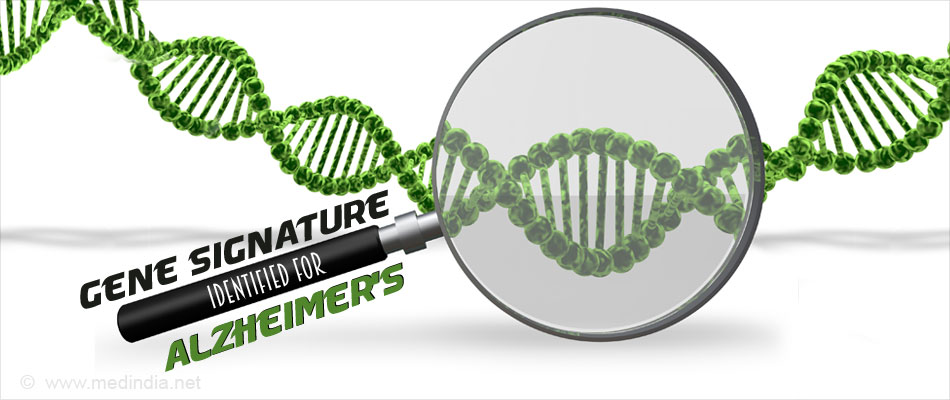
- Gene signature that mimics the pattern of spread of Alzheimer’s detected in healthy brain.
- Potential for uncovering the molecular origins of the disease condition
- Preventive treatment could be provided even before symptoms begin to develop
- Changes in the brain seem to begin nearly 10 years before memory problems set in.
- Protein deposits in the brain form amyloid plaques and tau tangles.
- The neurons lose connection with other neurons and die
- As the disease progresses, more and more neurons begin to die
- The size of the brain is considerably reduced during the last stages of the disease.
There is a genetic basis of Alzheimer’s disease that has been recognized but the current study has found a distinct gene signature that could open doorways to earlier detection and better care for healthy individuals prone to the disease.
The researchers began by probing why certain parts of the brain were far more vulnerable to this disease than other areas of the brain. Senior author Professor Michele Vendruscolo from Cambridge's Department of Chemistry said "To answer this question, what we've tried to do is to predict disease progression starting from healthy brains. If we can predict where and when neuronal damage will occur, then we will understand why certain brain tissues are vulnerable, and get a glimpse at the molecular origins of Alzheimer's disease."
Vendruscolo and colleagues wanted to explore the amyloid plaques and tau tangles and they wanted to know “Whether there is something special about the way these proteins behave in vulnerable brain tissue in young individuals, long before the typical age of onset of the disease".
The development of Alzheimer’s disease is not primarily due to the accumulation of protein but a failure of the body’s defense mechanism to prevent the protein aggregation. The body has certain defense mechanisms that are aimed at prevHighlights of the Studyenting the accumulation of protein, however, as age advances the defense mechanisms become weaker and there is protein accumulation, also called protein homeostasis.
Highlights of the Study
- The gene signature could identify people who are at high risk of developing Alzheimer’s.
- The researchers in an earlier study identified that the use of neurostatin could prevent the development of Alzheimer’s.
- The high risk population identified using the gene signature could consume neurostatin, just like statins are consumed to prevent heart disease.
- The metabolic basis that has been identified can be used to understand the progression of the disease and other similar mental illnesses like Parkinson’s. Rosie Freer the study’s lead author and Doctoral student in the Department of Chemistry and the study's lead author adds “"It is exciting to consider that the molecular origins identified here for Alzheimer's disease may predict vulnerability for other diseases associated with aberrant aggregation - such as ALS, Parkinson's disease and frontotemporal dementia. I hope that these results will help drug discovery efforts - that by illuminating the origins of disease vulnerability, there will be clearer targets for those working to cure Alzheimer's disease.
- The body’s defense mechanisms could be enhanced to help the brain age gracefully and to prevent the progression of the disease.
Source-Medindia















